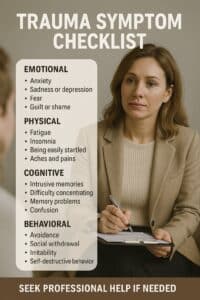What is social anxiety disorder (SAD)?
Everyone experiences shyness and fear in social settings from time to time, but social anxiety is more than just shyness or being an introvert. It is also normal to feel nervous before important social situations or in an environment where you may not know many people. However, people who fear evaluation from others due to how they act or bodily symptoms (e.g, blushing, sweating, shaking), particularly if this lasts six months or more, may be suffering from an anxiety disorder. For people with SAD, everyday social interactions can illicit feelings of fear, anxiety, and the desire to avoid. These feelings may end up impacting relationships, daily routines, work, school, or other obligations.
Symptoms of Social Anxiety Disorder
-Fear or anxiety about social situations where there is a potential to be scrutinized by others
-Fear that you others will evaulate you negetavley due to the way you act or your anxiety symptoms
-Social situations are avoided or experienced with much anxiety
-Fear, anxiety, or avoidance tends to lasts for 6 months or more or be persistant
-The fear or anxiety causes significant distress
-For some people social anxiety only happens in performance settings
While these are some symptoms of social anxiety disorder, it is important to know that you can not self diagnosis and a licensed mental health proffesional will be able to tell you if you have SAD. It is also important to note that you can have social anxiety but not meet diagnostic criteria for SAD. Please also know that just because you have some of these symptoms does not mean you have an anxiety disorder. Getting nervous for big events or speeches is very common!
If you would like to know if you meet criteria for SAD, you can meet with a licensed mental health professional who can do an assessment.
We also want to make an important point here that meeting criteria for SAD or feeling anxious in social situations both deserve support. If you want help navigating social situations, feeling less anxious in social settings, or reduced anxiety in areas of performance there are tools that can help! We will be talking about what can cause SAD and then tools to help in this blog post.
What causes social anxiety disorder?
Social anxiety is a common form of anxiety that affects about 12.1% of adults in the United States. Like many mental health issues, SAD is influenced by both biological and environmental factors (Mayo Clinic, 2021). Research has found that social anxiety disorders do run in families, but research has not yet determined how much of this trend is influenced by genetic factors or by learned behaviors. However, researchers have recognized that the amygdala, the part of the brain that is responsible for fear, plays a role in this anxiety disorder. Those with an overactive amygdala are more likely to experience social anxiety as they have heightened responses to fear (Mayo Clinic, 2021). Further, one’s environment can influence social anxiety. For example, if an individual experienced severe embarrassment or scrutiny as a child in a social setting, the child may learn to expect social ostracism in their future social interactions, which can lead to a SAD. Children who have overprotective parents or parents who themselves experience social anxiety are also more likely to develop this disorder (Mayo Clinic, 2021).
SAD can be very difficult to cope with without support. This form of anxiety can interfere with many life responsibilities and it is also very draining to feel anxious. However, there are many treatment options available that can help improve and manage your symptoms:
Treatments and What Can Help
Therapy (CBT)
Cognitive Behavioral Therapy (CBT) is a form of therapy that is used to treat social anxiety and SAD. This type of therapy has been shown in research studies, and in our psychologists personal experience working with clients, to be very effective. CBT focuses on teaching people different ways of thinking, behaving, and reacting to instances that cause anxiety. CBT also helps you improve and practice your social skills. This can help decrease the desire to avoid social interactions as confidence is boosted. In CBT, your therapist will work with you to come up with a plan on how to tackle feared social situations. They can give you different tools that you can use to reduce anxiety.
While CBT for social anxiety is much more complex than we can cover in a blog post, we want to share one important part of it. One of the main goals of CBT is to identify unhelpful thoughts and replace them with more realistic and helpful beliefs. By identifying negative thought patterns and changing them, you can then see changes in the way you feel and behave. CBT is useful for working through social anxiety as many people with social anxiety experience negative thoughts that occur repeatedly. For example, “they will notice I am sweating” or “everyone is going to be staring at me thinking I am awkward.” These negative thoughts then increase anxiety and decrease one’s ability to cope. For example, if you are worried you will sweat and spend much time focusing on trying not to sweat this will decrease your effectiveness in social situations. It also likely will increase the chance you will start sweating. With CBT you will learn to tackle these negative thoughts and bring your focus to the room instead of internally about your body or in your head.
Medication
Some individuals with SAD may benefit from anxiety medications. Though CBT has proven to be very effective in learning coping strategies and changing thought patterns, sometimes this form of therapy can be paired with medication. As psychologists we do not prescribe medication. However, we have a list of psychiatrists that we work closely with that we can refer you to. If you work with us for therapy and are interested in medication we can coordinate care with a psychiatrist.
Support Groups
Support groups can be an effective way to help cope and challenge social anxiety. A support group offers a sense of belonging, honest feedback from others, empathy and understanding, and advice on how others cope with their anxiety. For some people a support group may feel too fearful, and that is ok. Treatment is always tailored to you.
At Best Within You Therapy and Wellness we offer a mindfulness group. Studies have shown mindfulness to be helpful in treating social anxiety. Studies have shown mindfulness can reduce rumination, reduce anxiety, and increase self esteem. Mindfulness can help bring you more into the room instead of in your head worrying.
If you would like support navigating social anxiety or any form or anxiety it would be our honor to help you. You are welcome to reach out for a complimentary phone consultation.
Thank you to our intern Jacqueline, Best Within You Therapy & Wellness Intern, for her help with this blog post.
References
Mayo Foundation for Medical Education and Research. (2021, June 19). Social anxiety disorder (social phobia). Mayo Clinic. Retrieved October 17, 2022, from https://www.mayoclinic.org/diseases-conditions/social-anxiety-disorder/symptoms-causes/syc-20353561
U.S. Department of Health and Human Services. (n.d.). Social anxiety disorder: More than just shyness. National Institute of Mental Health. Retrieved October 17, 2022, from https://www.nimh.nih.gov/health/publications/social-anxiety-disorder-more-than-just-shyness
















